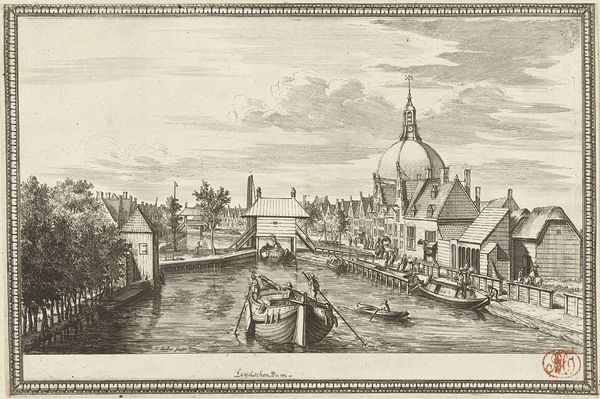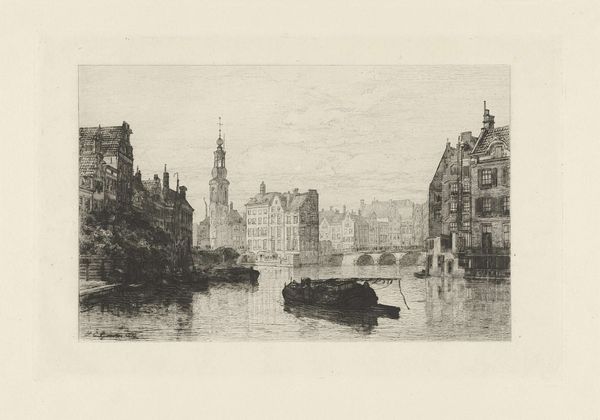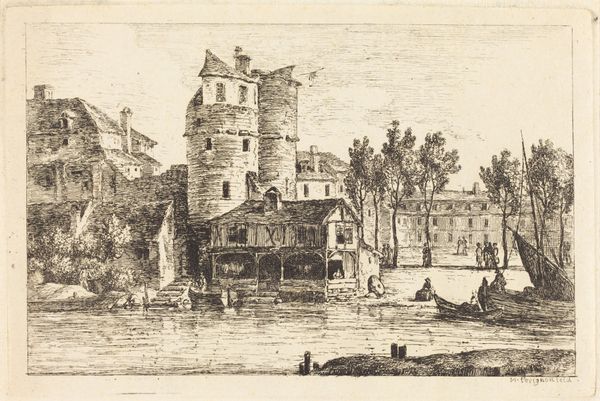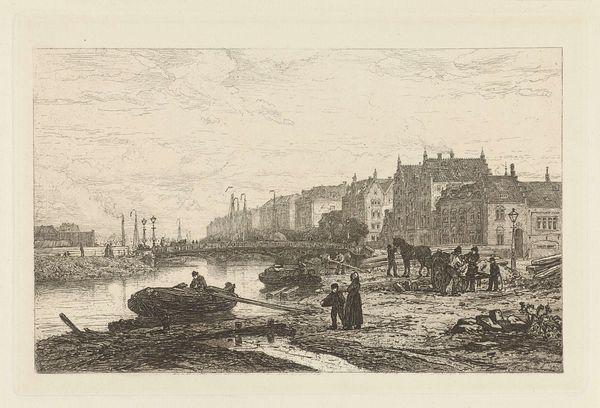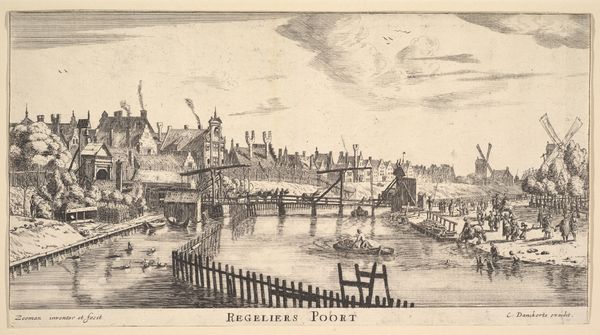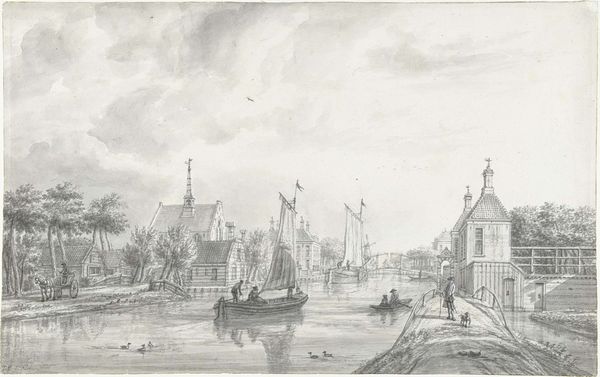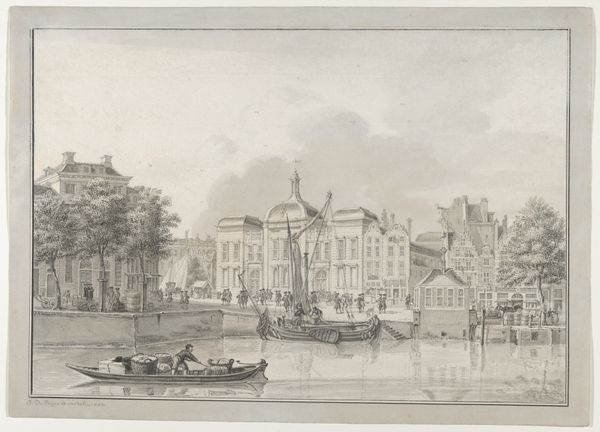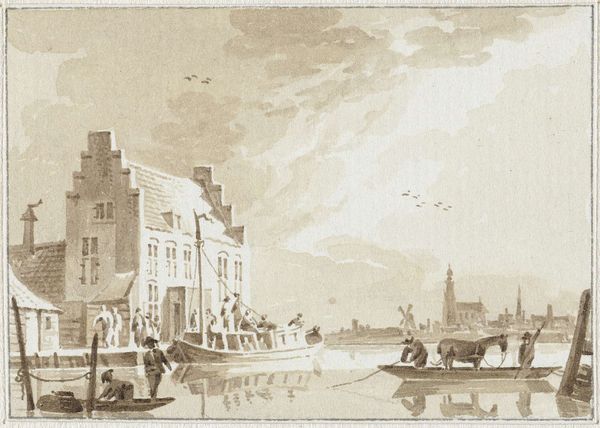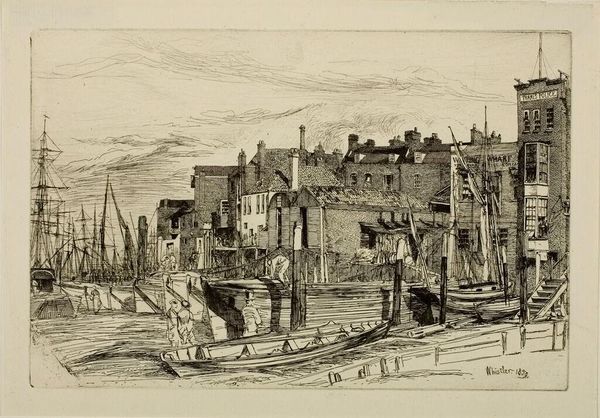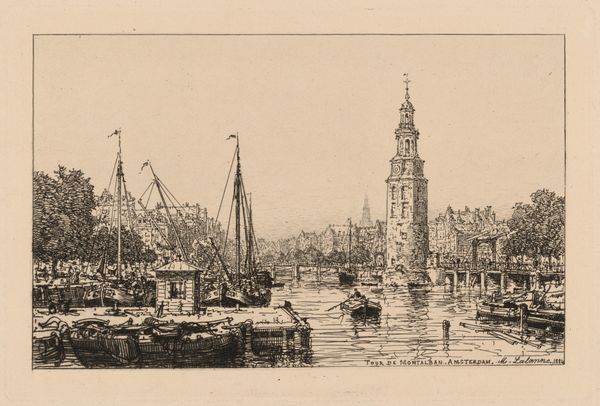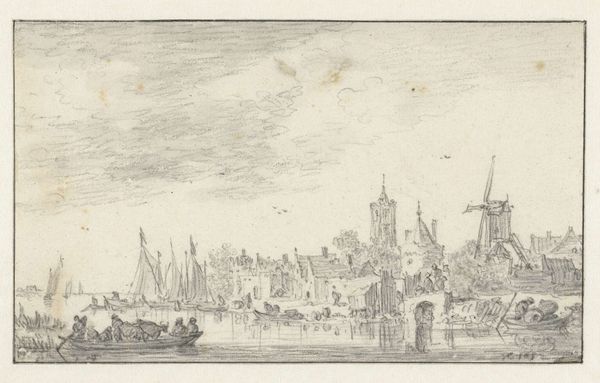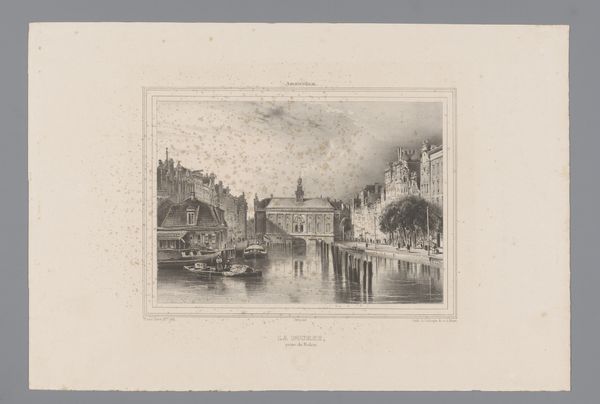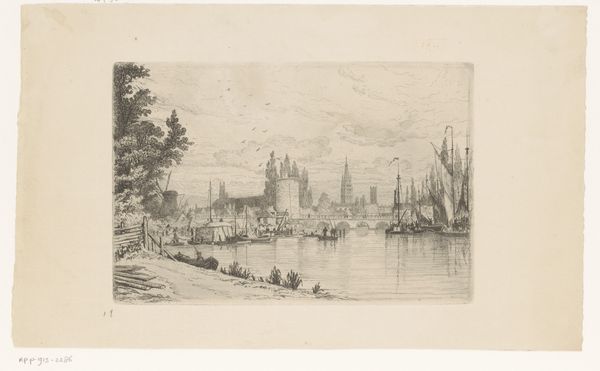
#
landscape illustration sketch
#
quirky sketch
#
mechanical pen drawing
# print
#
pen sketch
#
old engraving style
#
personal sketchbook
#
sketchwork
#
pen-ink sketch
#
pen work
#
sketchbook drawing
Dimensions: image: 14.8 × 24.2 cm (5 13/16 × 9 1/2 in.) plate: 20 × 28.2 cm (7 7/8 × 11 1/8 in.) sheet: 24.3 × 32.8 cm (9 9/16 × 12 15/16 in.)
Copyright: National Gallery of Art: CC0 1.0
Curator: Welcome! We are here to contemplate Maxime Lalanne’s 1879 print, titled “Le Wagg-Poids de la Ville d'Amsterdam.” Editor: It feels remarkably dense, doesn’t it? Almost every space is filled with texture, evoking a bustling, almost claustrophobic urban atmosphere. You can almost smell the harbor! Curator: Indeed. Beyond the immediate depiction, it carries so much historical weight. Weighing stations like the one Lalanne illustrates were crucial in establishing civic authority, becoming symbols of fair trade and municipal integrity. Editor: Absolutely, it also points to Amsterdam as an entrepôt: the machinery of global exchange is rendered here, meticulously. Look closely at the boats, the stacked barrels, the laborers--evidence of massive material through-put in this mercantile system. Curator: Consider too how the artist chooses to portray this. The old engraving style conjures up similar scenes from the Dutch Golden Age, associating contemporary Amsterdam with its powerful, mercantile past. It’s about linking itself to a shared cultural memory. Editor: It makes you wonder about the practical aspects. What sort of labor created the physical object of this etching and why this traditional aesthetic for Lalanne, in 1879, instead of adopting new approaches afforded by technological progress? Curator: A good point. Nostalgia, perhaps? An idealization of labor, deliberately harking back to simpler times even as industrialisation was transforming society? Editor: Yes, but the complexity still remains in the crosshatching of those dense lines, rendering depth and texture, showing an artisanal skill. Curator: So, beyond merely illustrating a building and the harbor it stands by, it's also asking us to contemplate a symbolic framework of civic authority and a city’s place within history. Editor: I agree. And it challenges us to think about the means and material of artistic production alongside systems of economic production. Curator: Well said! Hopefully this look at Lalanne's print encourages everyone to consider not just what is depicted, but what historical and cultural forces are at play. Editor: It's always rewarding to delve deeper into the relationships between material things, like etchings, and societal systems, as these details can tell the big stories.
Comments
No comments
Be the first to comment and join the conversation on the ultimate creative platform.
